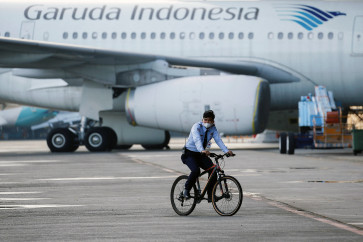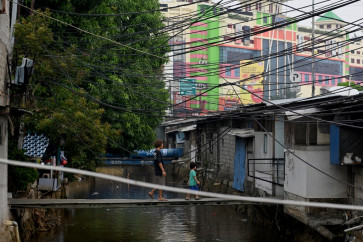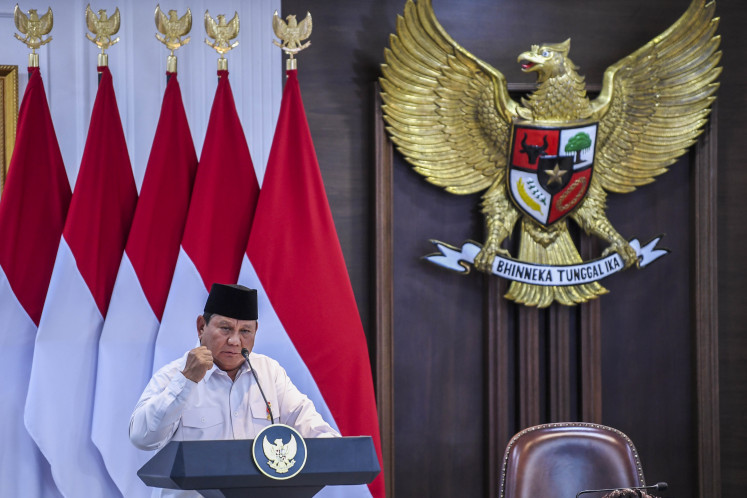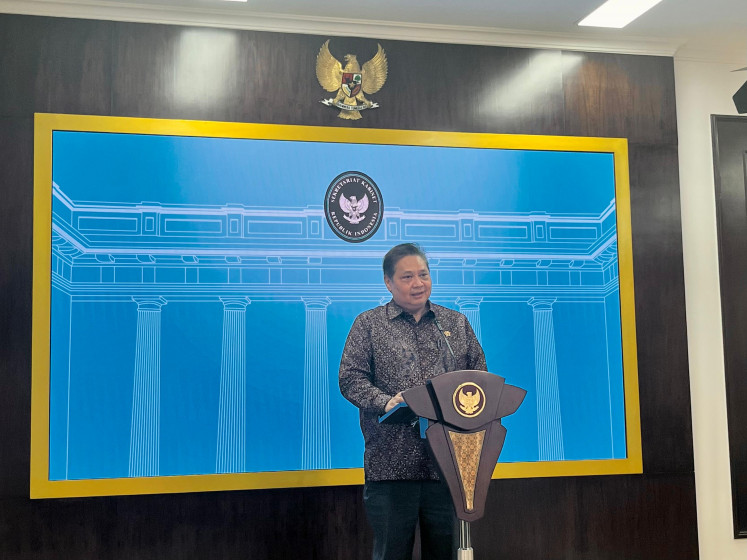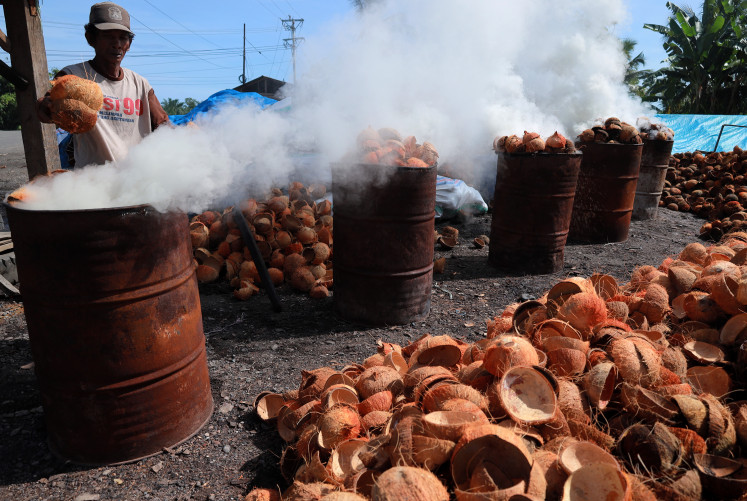A link to Mexico across the Pacific
When Mexican President Enrique Peña Nieto came to Bali several weeks ago as part of the APEC Forum, few noticed that he was continuing a long tradition of contact across the Pacific
Change text size
Gift Premium Articles
to Anyone

W
hen Mexican President Enrique Peña Nieto came to Bali several weeks ago as part of the APEC Forum, few noticed that he was continuing a long tradition of contact across the Pacific.
Native Mexicans, for example, were among the 'Kastilas' crews of the Spanish galleons that, from 1565 onward, plied the trade route between Acapulco and Manila. Some eventually moved to the Moluccas, then part of the Spanish Empire, where, due to a resemblance to the local population, they were able to blend into life in what would later become Indonesia.
Another aspect of the common history shared between Indonesia and Mexico is currently on display at an exhibition at the Pasifika Museum in Nusa Dua. The exhibition focuses on Miguel Covarrubias, the Mexican artist and writer whose The Island of Bali (1937) helped to solidify the isle's reputation as the land of paradise.
Covarrubias did much more than write a single book, as any casual student of Indonesia knows. Even before coming to Bali for the first time in 1930, he was already well known in New York as a cosmopolitan celebrity caricaturist for such venerable magazines as the New Yorker and Vanity Fair.
Upon his return to Mexico City, Covarrubias gained recognition as a modern artist in his own right, on the same footing as his colleagues and friends Diego Rivera and Orozco, both great modern muralists.
It is this total artist that the museum is celebrating. The exhibition, featuring works on loan from Mexican collections gathered with the help of the Mexican Embassy, looks at the long history of connections between the two nations.
A discussion of Covarrubias must begin with when he first heard about Bali. Newly married, he visited the island with his young bride, Rosa. The couple stayed on the island for nine months ' a short period, but sufficient for him to take detailed notes and make sketches, while Rosa took photographs.
Back in New York, Covarrubias turned some of those sketches in gouaches and watercolors, which he exhibited. However, the lure of Bali was strong. In 1933, they returned in Bali, this time intent on producing a 'complete' visual and written inventory of Balinese culture.
The result was The Island of Bali, in which Covarrubias conveyed in simple, poetic words the enchantment that all visitors feel when they land on the Island of the Gods.
The role Covarrubias played in the development of Balinese art is little known. When talking of the renaissance of Balinese arts in the 1930s, most focus on the role of Walter Spies.
Covarrubias is seldom mentioned. He should be.
While Spies lived in Ubud, Covarrubias was in Blaluan.
Today few people have heard of Blaluan. But at the time, it was a different place: a village of Denpasar, with rice fields as the main feature of its landscape ' not like today, part of a city of 1 million inhabitants in a nightmarish urban landscape.
Blaluan was like is Ubud today: One found, there or in nearby Klandis, the best music and the best dancers of the island. It was there where the kebyar duduk dance was performed for the guests of nearby Bali Hotel.
It was in Blaluan, as much as in Ubud, where one of the main changes in Balinese art occurred: the development of the so-called elongated style. The artist that began the style was I Tegehan, a neighbor of Covarrubias.
The main feature of Covarrubbias' artwork is its linearity, a feature that I Tegehan apparently imported into his sculpture. It was not strictly speaking borrowing, but was perhaps more a reciprocal influence across the whole distance of the Pacific.
Linearity is what had long been missing in Balinese art, which, at that time, accumulated iconic elements to the point of overcrowding. Covarrubias' talent for going to the gist in his drawings may well have impressed the Balinese to whom he exposed his works.
This quality might have also influenced other Balinese artists, such for example as the great Balinese drawer Lempad, whom Covarrubias got to know through Spies.
Before going to Bali, Covarrubias worked as a cartoonist. All cartoonists grasp what is essential to a character before overemphasizing features in a critical or laudatory way. In his drawings and paintings depicting Bali, Covarrubias retained this ability.
For example, in his works a bodily gesture becomes a couple of curved lines, immediately recognizable as a Balinese dance. It is this ability to identify what is essential and make it iconic ' while at the same time discarding what is secondary ' that makes of Covarrubias an important artist.
Covarrubias also displayed this ability for synthesis outside visual arts. The Island of Bali remains readable today for the same reason. It is free of jargon, and yet takes us 'inside' the life of the Balinese. Similarly the maps he made of the Pacific show the ocean as a 'unit', not as an accumulation of distinct cultural details.
He cannot be more different from Spies, the other great foreign artist of Bali. In paintings on the same subject, the banyan tree, Covarrubias approach was totally different from Spies'.
Spies, in his deep-dark chiaroscuro work, depicted a dialogue of light and darkness. Covarrubias, on the contrary, viewed the banyan as a moment of life 'and light.
The best proof of Covarrubias' importance is that he had emulators not simply among the Balinese, but also among Western artists. As the exhibition shows, the poses adopted by Covarrubias' characters are so iconic and characteristic of the bodily ease of the Balinese that they have been emulated by artists such as Sonnega and Han Snel.
Considering the role played by Covarrubias in Mexico and Indonesia, a visit to the Pasifika exhibition is a must to for all lovers of art ' and of Bali.
'Miguel Covarrubias and Bali' runs until Dec. 15. For more information, visit museum-pasifika.com.
' Photos by JP/Anggara Mahendra
The writer has a master's degree from the Sorbonne and a doctorate from L'école des Hautes Ãtudes en Sciences Sociales. He has written about Balinese culture for more than 30 years

